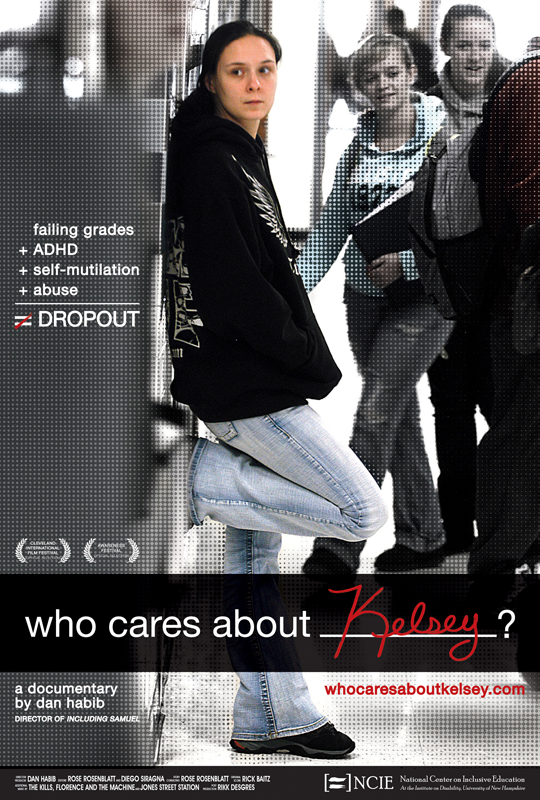 Dan Habib’s new film project Who Cares About Kelsey? documents the lives of students with emotional/behavioral challenges, and shows innovative educational approaches that help these students to succeed – while improving the overall school culture and climate. Habib is creator of the internationally acclaimed documentary, Including Samuel.
Dan Habib’s new film project Who Cares About Kelsey? documents the lives of students with emotional/behavioral challenges, and shows innovative educational approaches that help these students to succeed – while improving the overall school culture and climate. Habib is creator of the internationally acclaimed documentary, Including Samuel.
Film Synopsis
When Kelsey Carroll entered high school, she was a more likely candidate for the juvenile justice system than graduation. Diagnosed with ADHD and carrying the emotional scars of homelessness and substance abuse, as well as the actual scars of repeated self-mutilation, Kelsey was volatile, disruptive and, by her own admission, “not a nice person” to be around. As a freshman at Somersworth (NH) High School, she didn’t earn a single academic credit, but she did get suspended for dealing drugs.
During Kelsey’s sophomore year, a new school leadership team implemented Positive Behavioral Interventions and Supports (PBIS), a youth-directed planning process called RENEW, and other reforms to improve the school’s culture and reduce the dropout rate. This schoolwide overhaul gave Kelsey a chance at a different outcome.
Who Cares About Kelsey? follows Kelsey through the ups and downs of her senior year. As the film delves into Kelsey’s life, we watch her navigate the halls and classrooms of her school and the fraught terrain of family and romantic relationships. Kelsey interacts with a military father who questions her account of the past and dismisses her plans for the future. She manages her relationship with a mother trying to atone for past failures that set in motion some of Kelsey’s most destructive behaviors. She spends much of her time with a boyfriend she cherishes but whose loyalty and support for Kelsey’s newly forming independence are uncertain.
Who Cares About Kelsey? will make viewers reconsider the “problem kids” in their own high schools and spark new conversations about an education revolution that’s about empowering–not overpowering–our most emotionally and behaviorally challenged youth.
